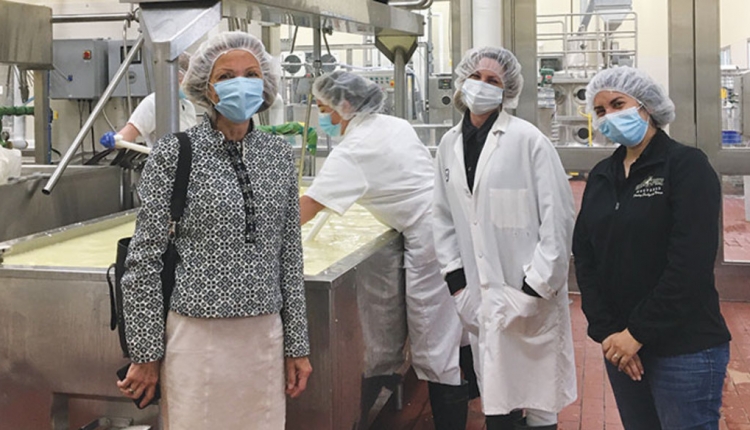
“Reproductive efficiency improves the farm’s lifetime production and lifetime profitability if done correctly,” said Rob Lynch, D.V.M., a veterinarian with Cornell’s PRO-DAIRY group.
A farm’s breeding program goals include improving the lifetime production of animals as well as bolstering replacement numbers to give farmers more options in the milking herd.
Two areas of focus
When Lynch works with a farm on troubleshooting reproductive problems, he first likes to discuss and assess who is on the team. Whether it involves managers, owners, employees, or veterinarians, he thinks it’s important to make sure everyone has the same program goals.
Second, he suggests looking at the data to see where the program currently stands.
“You can’t even start analyzing the data until you get a good understanding that the data reflects what’s actually happening on the farm and that it’s entered correctly and consistently,” he said during “Troubleshooting Herd Health Issues in your Dairy-Lactating Cow Reproduction” hosted by Cornell Extension.
Lynch then tries to break down the program into basic elements. He focuses on pregnancy rate, conception risk, and heat detection rate. He also likes to evaluate the voluntary wait period, the first service breeding program, and all the breedings after the first service.
In working with farmers, the herd health and dairy management specialist for Cornell PRO-DAIRY has also seen some roadblocks limiting program efficiency.
Don’t drill too deep into data
“Some common problems I’ve seen over the years looking at reproductive records – one would be an overanalysis of the data. Basically, people start splitting the numbers down so small that we’re trying to make comparisons on very small sample sizes. The smaller the sample size, the more likely that any difference we’re seeing is just random chance,” said the Cornell veterinarian. “We have to be careful we don’t split these numbers so small that we’re not looking at meaningful differences.”
Lynch cites Paul Fricke, Extension Dairy Reproduction Specialist at the University of Wisconsin, who advised that a meaningful sample should be 400 to 500 breeding events per group.
Lynch also looks at the basic program elements when first checking for problems.
Start with the basics
“It’s tempting to assume that if there’s an issue on the farm it’s something rare and interesting, but we start with the basics,” he said.
Some factors to check include:
- Semen tanks with no nitrogen
- Proper semen handling when getting the straws out of the tank
- Following the thawing recommendations from the semen company
- Making sure equipment is calibrated correctly
- Ensuring insemination is happening in a timely manner after the semen is thawed
- Best practices of insemination techniques
“We don’t want to leave out the basic pieces of what leads to a fertile breeding when we’re trying to investigate a breeding problem,” he said.
He also emphasizes that addressing critical control points early on in the process allows farmers to head off problems before they become too costly. He recommends utilizing financial tools like the one offered through University of Wisconsin-Extension that make it easy to compare reproductive programs to make the most informed economic decisions.








